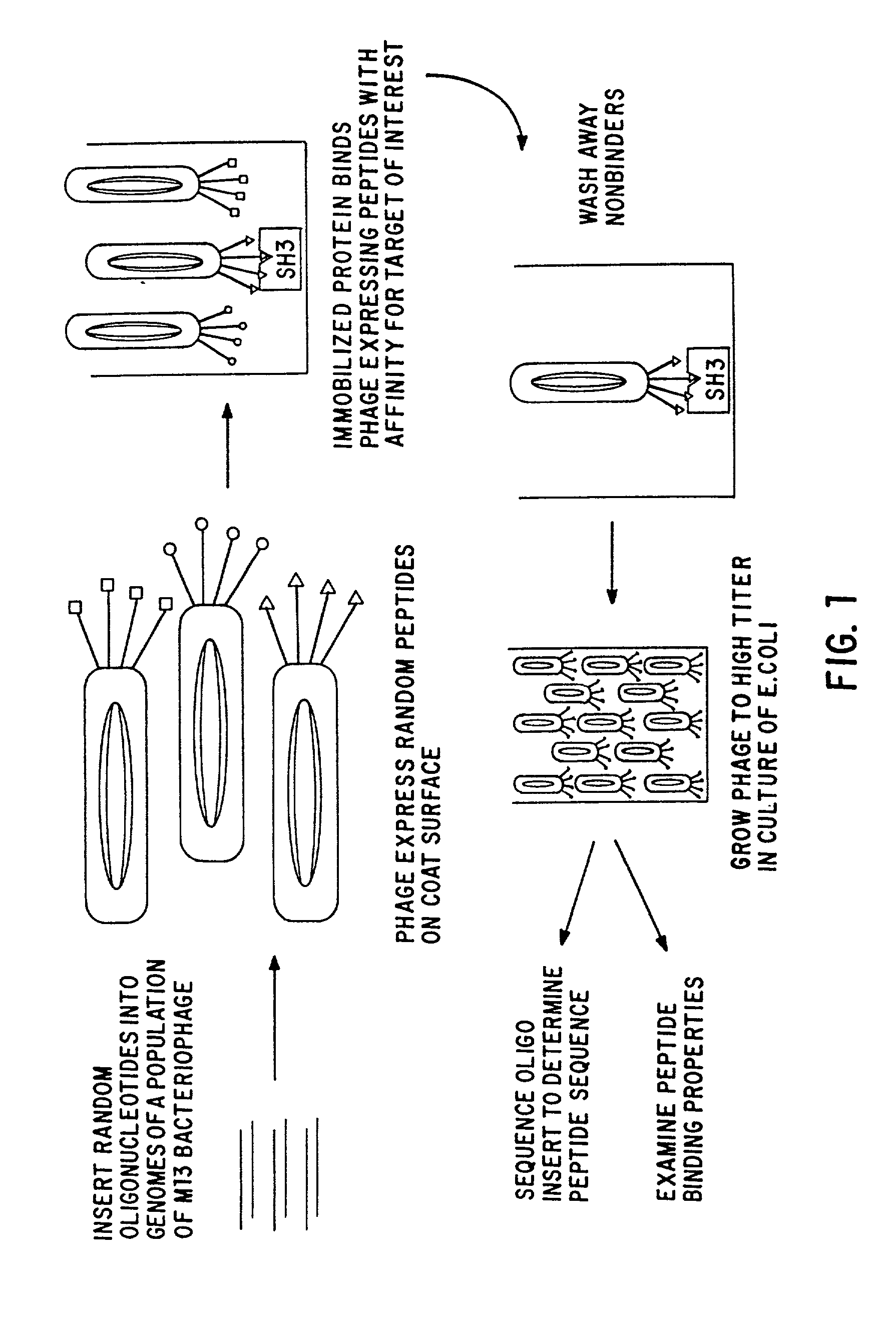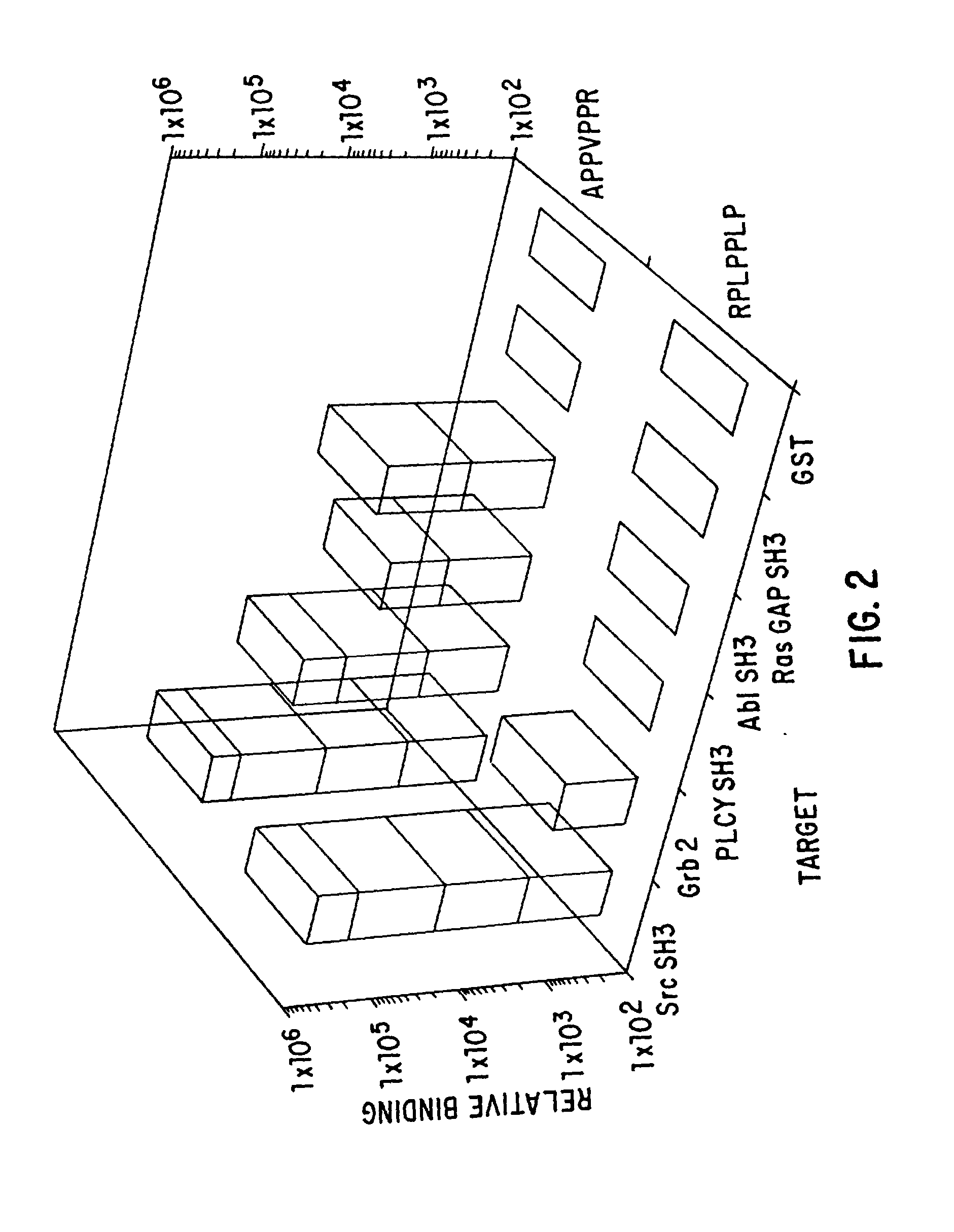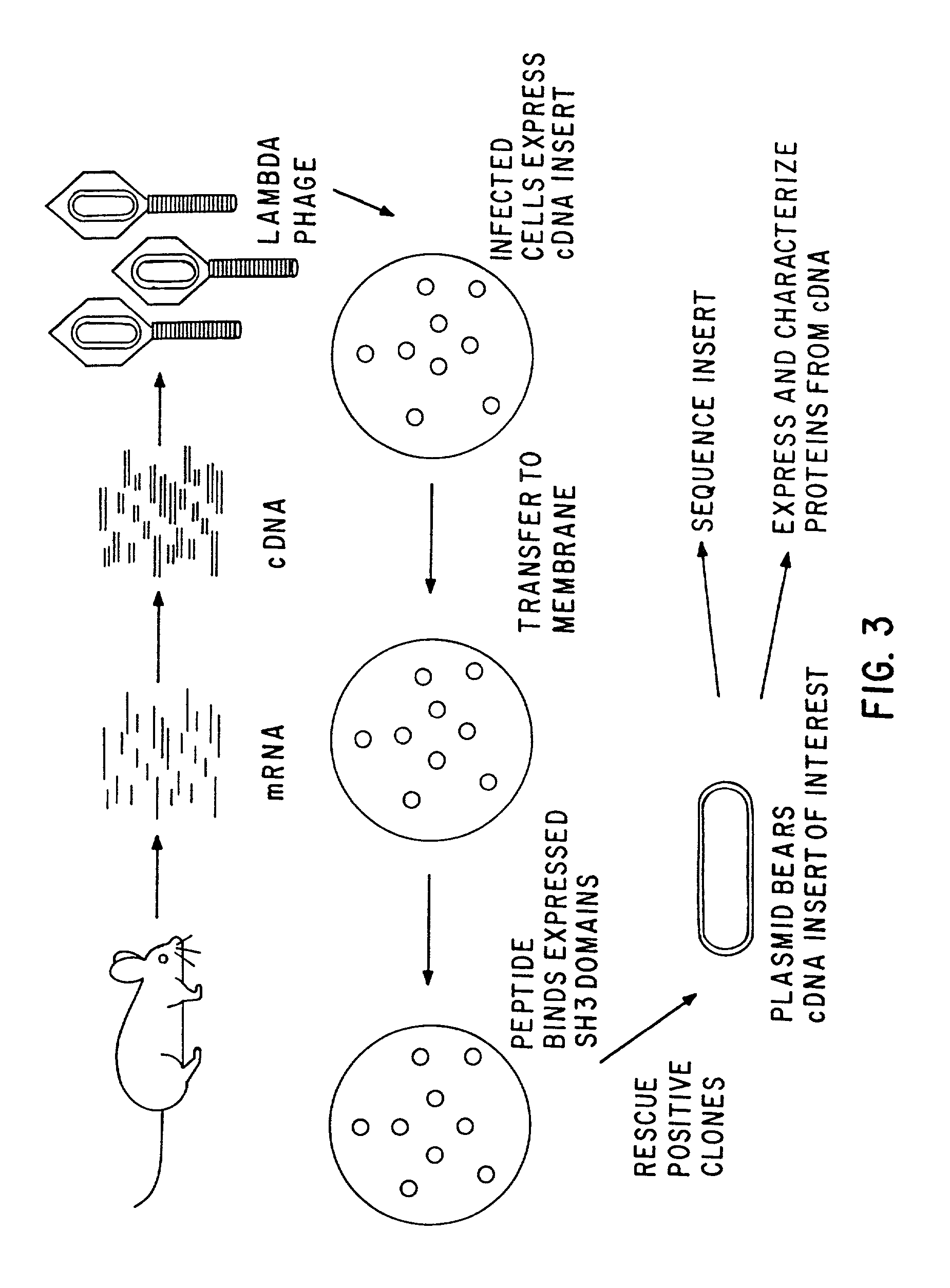Polypeptides having a functional domain of interest and methods of identifying and using same
a functional domain and polypeptide technology, applied in the field of polypeptides having a functional domain of interest, can solve the problems of limited applicability to finding novel proteins containing functional domains, non-complete understanding of the role of oncogenesis, normal cell growth, differentiation, etc., and achieves ease of specificity.
- Summary
- Abstract
- Description
- Claims
- Application Information
AI Technical Summary
Benefits of technology
Problems solved by technology
Method used
Image
Examples
Embodiment Construction
[0105] As stated above, the present invention is related broadly to certain polypeptides having a functional domain of interest and is directed to methods of identifying and using these polypeptides. The present invention is also directed to a method of using isolated, operationally defined ligands involved in binding interactions for optimally identifying an exhaustive set of compounds binding such ligands and to compounds, target molecules, and, in one embodiment, polypeptides having a functional domain of interest and to methods of using these compounds. The detailed description that follows is provided to elucidate the invention further and to assist further those of ordinary skill who may be interested in practicing particular aspects of the invention.
[0106] First, certain definitions are in order. Accordingly, the term "polypeptide" refers to a molecule comprised of amino acid residues joined by peptide (i.e., amide) bonds and includes proteins and peptides. Hence, the polypep...
PUM
| Property | Measurement | Unit |
|---|---|---|
| molecular weights | aaaaa | aaaaa |
| molecular weight | aaaaa | aaaaa |
| molecular weight | aaaaa | aaaaa |
Abstract
Description
Claims
Application Information
 Login to View More
Login to View More - R&D
- Intellectual Property
- Life Sciences
- Materials
- Tech Scout
- Unparalleled Data Quality
- Higher Quality Content
- 60% Fewer Hallucinations
Browse by: Latest US Patents, China's latest patents, Technical Efficacy Thesaurus, Application Domain, Technology Topic, Popular Technical Reports.
© 2025 PatSnap. All rights reserved.Legal|Privacy policy|Modern Slavery Act Transparency Statement|Sitemap|About US| Contact US: help@patsnap.com



